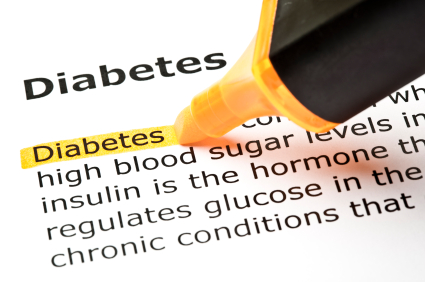Diabetes is not just “a touch of sugar.” It is a serious disease that at the time of diagnosis has the same long-term implications as those for someone having a heart attack. But in order to manage and treat type 2 diabetes, we need to stop chasing high blood sugar. That doesn’t work. Instead, we need to prevent high blood sugar.

Too often by the time I see my patients, it’s far too late, and they’re suffering from severe complications. According to the Centers for Disease Control, more than four million people age 40 or older have early eye damage. Almost all of my patients already have cardiovascular complications. This double disease state, or co-morbidity, is a problem; according to the World Health Organization, 50 percent of people with diabetes die of cardiovascular disease (primarily heart disease and stroke).
But at one point these people were not diabetic. The time to act is at the earlier stages. When someone is diagnosed with prediabetes, it’s a wake-up call showing trouble ahead if no changes are made.
So why is the disease advancing so rapidly? Because too few people are diagnosed in the “prediabetes” or early diabetes stage. There’s simply not enough attention given to this critical point of intervention, because they feel well and have no symptoms.
There seems to be a common but mistaken belief among patients and some doctors alike that lifestyle changes alone are sufficient to prevent complications once diabetes manifests. Not so. The great majority of individuals with a diabetes diagnosis need a combination of lifestyle changes and medications. Consider that the National Heart, Lung, and Blood Institute of the National Institutes of Health recently stopped a study of more than 5,000 patients with type 2 diabetes because it found that long-term weight loss ultimately did not reduce the number of heart attacks or strokes in diabetics.
Type 2 diabetes is a chronic disease that needs to be diagnosed and treated early and aggressively—which is why education, patient accountability and involvement in the disease are critical even at the earliest stages. Patients and their families need to understand that for most patients, diabetes begins slowly. One moves from normal (fasting blood sugar of between 70 mg/dl and 100 mg/dl) to prediabetes (fasting blood sugar of between 101 mg/dl and 125 mg/dl) and diabetes (fasting blood sugar of 126 mg/dl or above.) While diabetes care is hardly “one size fits all,” we know that better education about the early progression to diabetes can help slow or even prevent the progression.
Yet what we call education is often generic, rarely customized and too often not provided at all. Proper education to help patients self-manage all phases of prediabetes and diabetes needs to be ethno-sensitive and provided in the most relevant languages. It must also include an avenue for two-way, open communication between the healthcare provider and the patient. And the entire family must be involved. Strong family and community support can lead to a better outcome—whether a patient is diagnosed with prediabetes or with diabetes itself.

